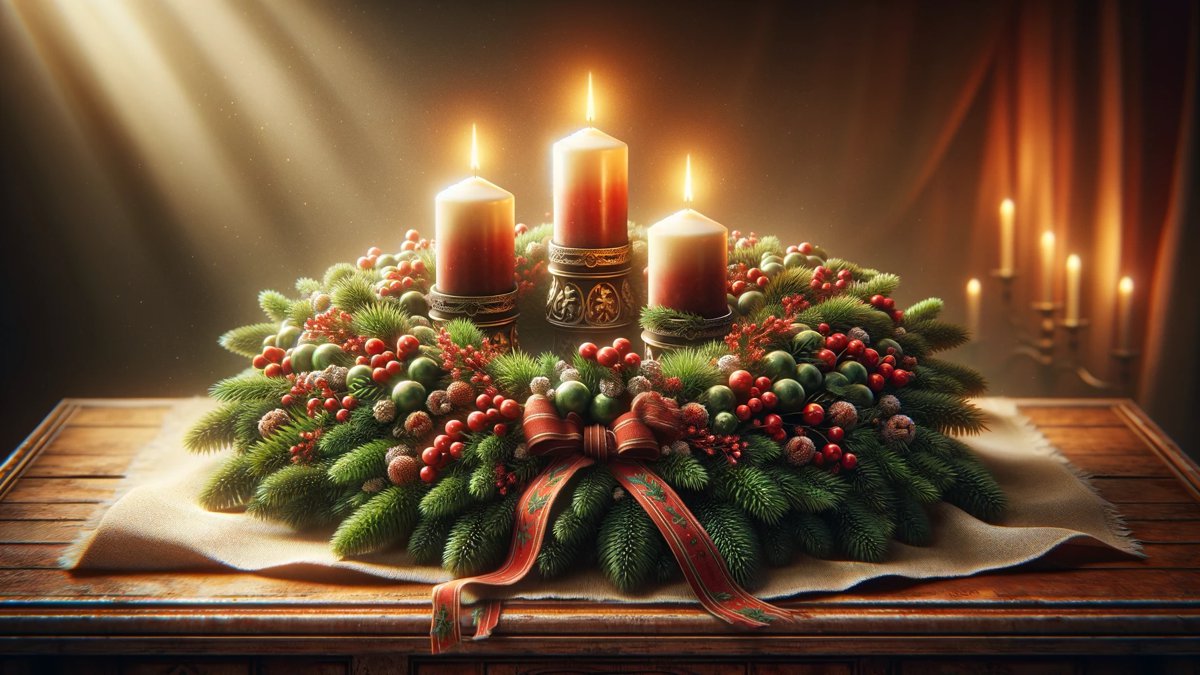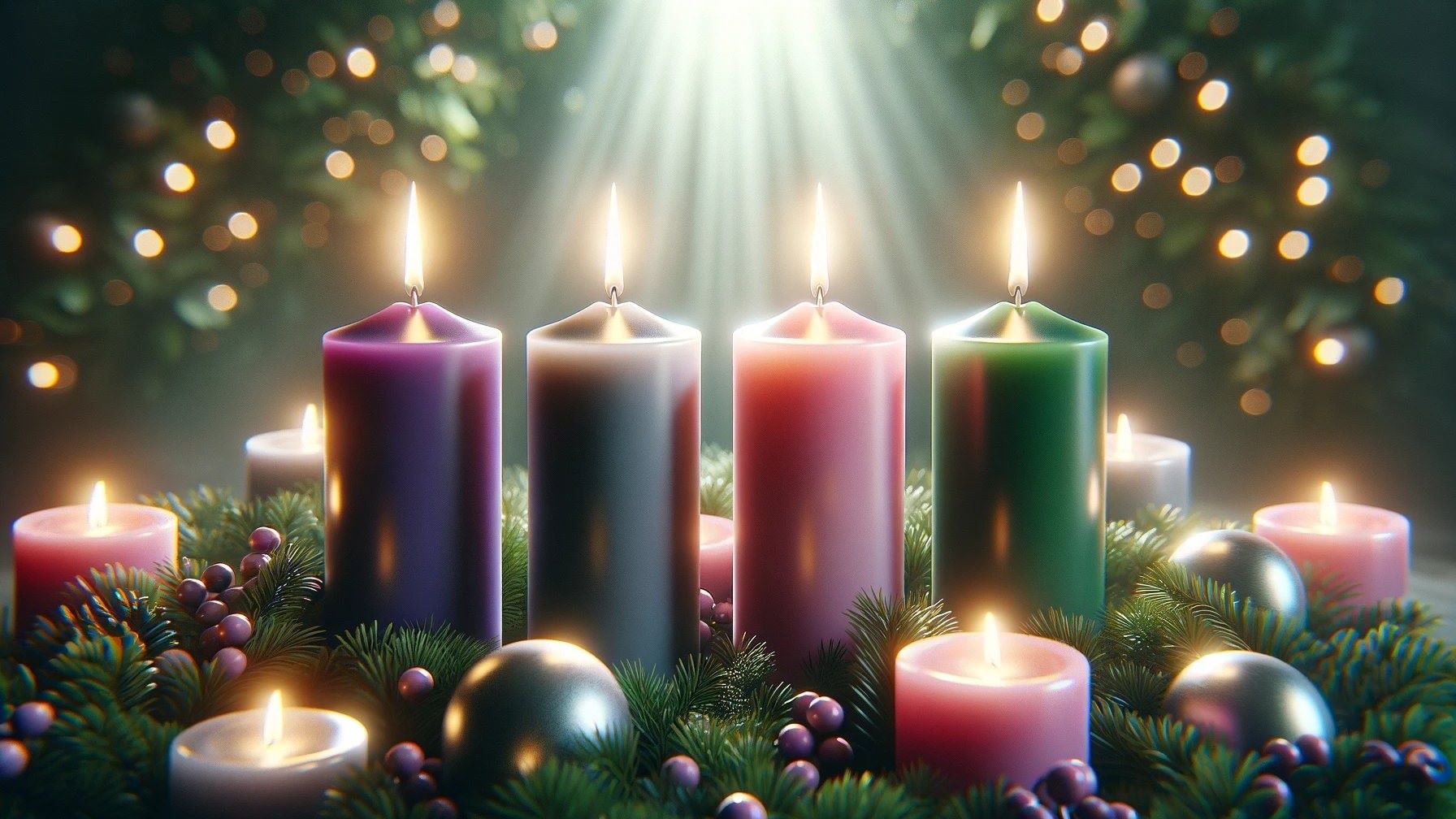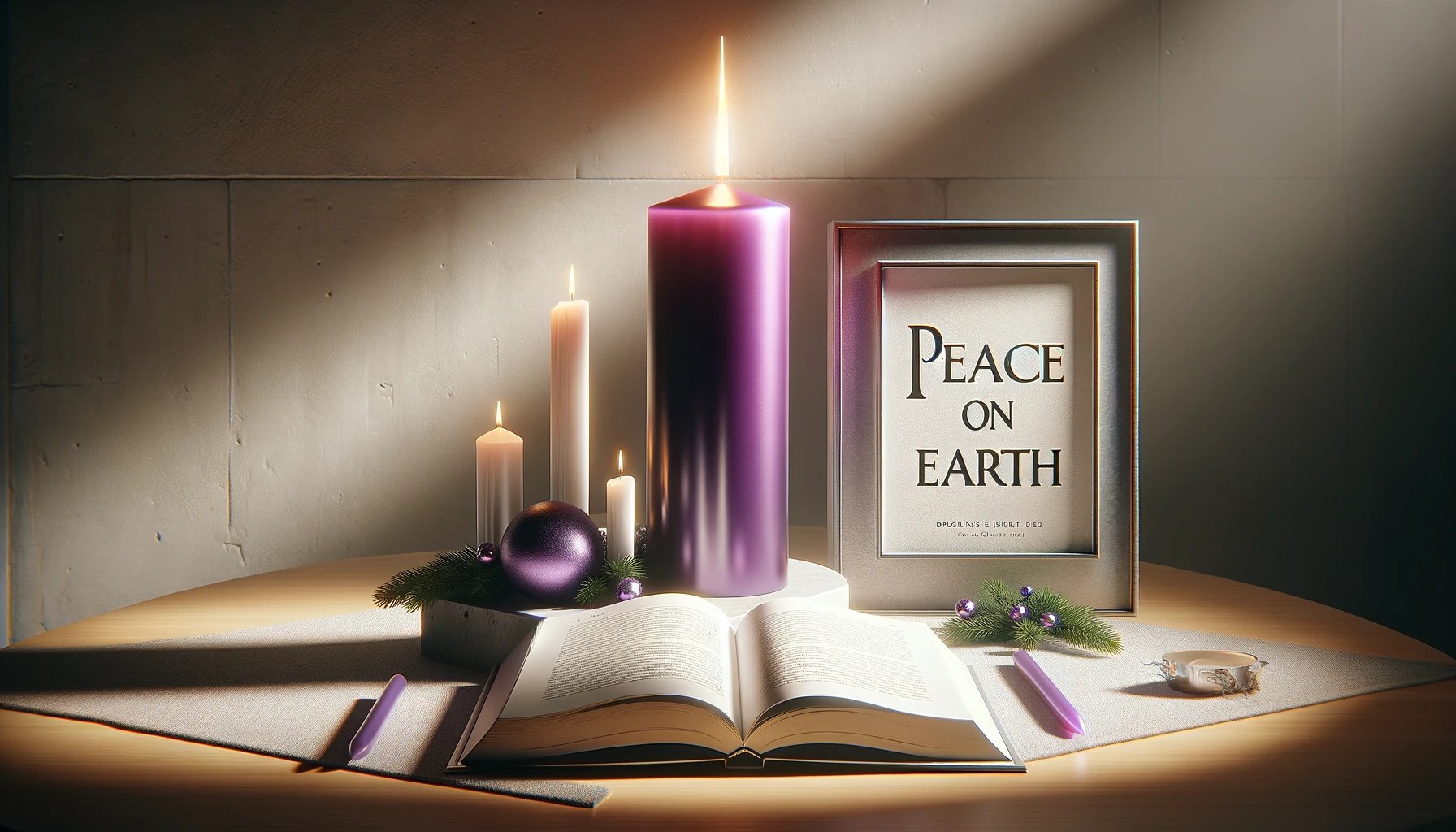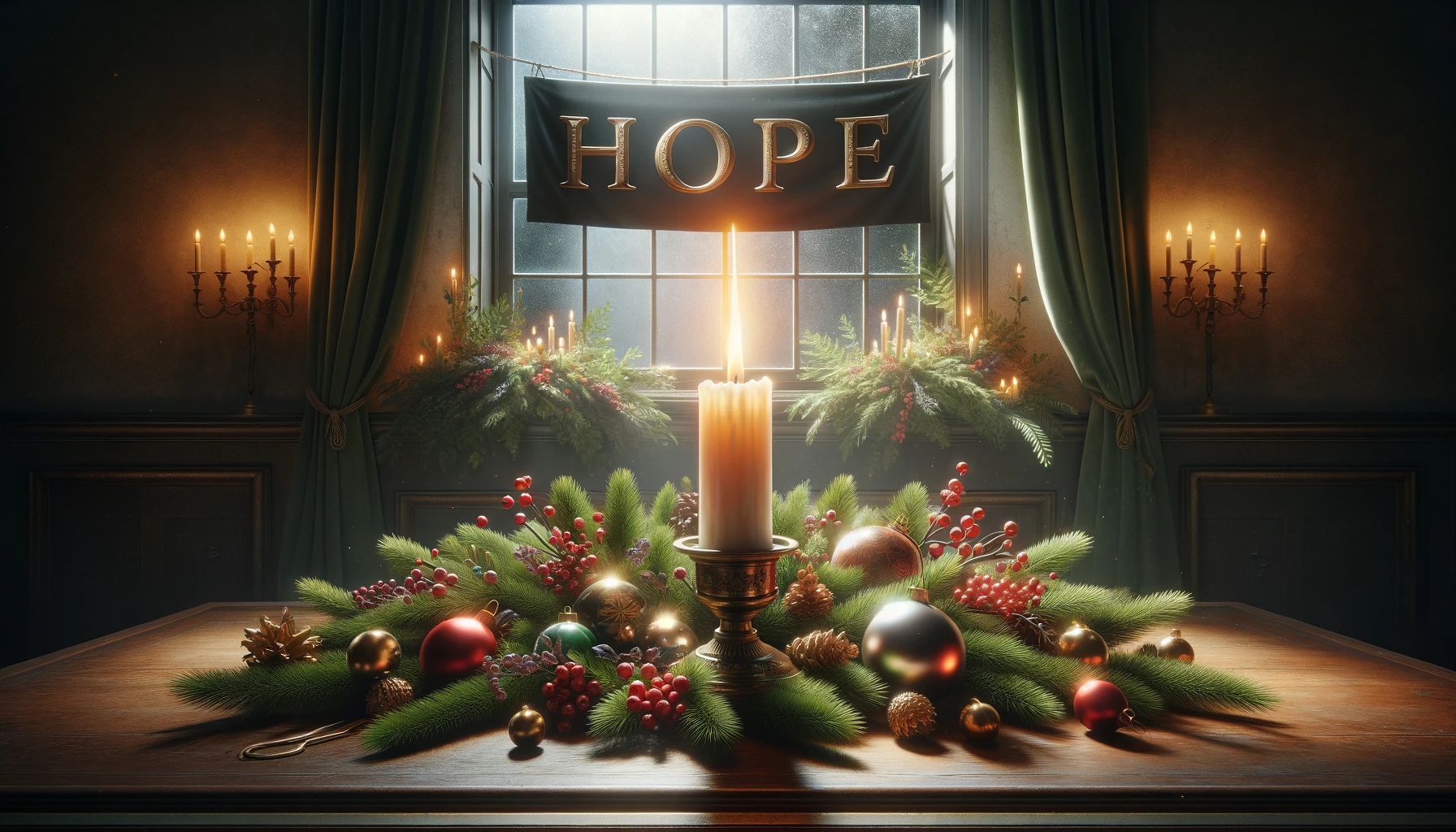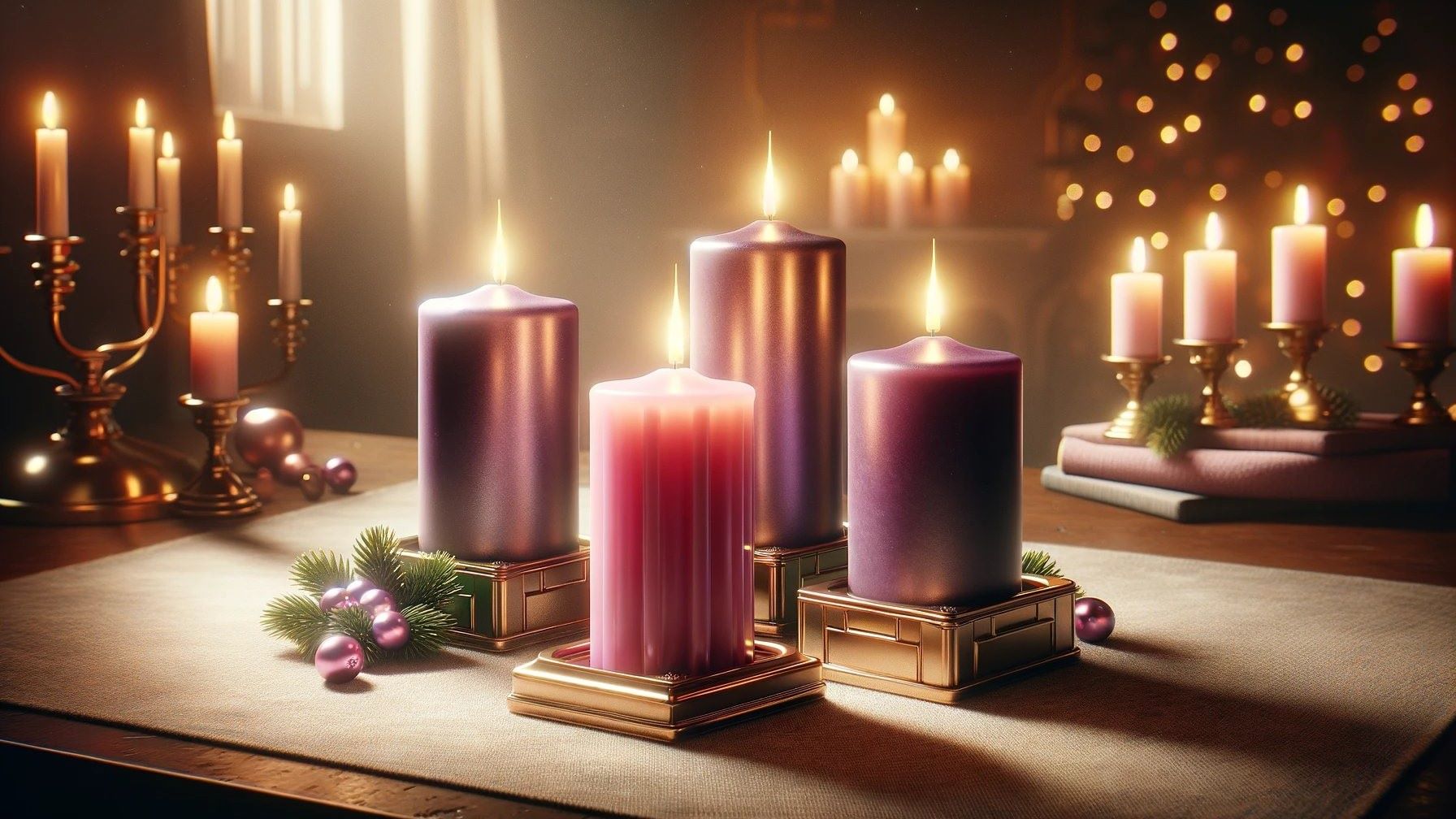Home>Special Themes>What Is The Order Of The Advent Candles?


Special Themes
What Is The Order Of The Advent Candles?
Published: February 14, 2024
Peter Smith, Editorial Director at Christian.net, combines deep insights into faith, politics, and culture to lead content creation that resonates widely. Awarded for his contributions to religious discourse, he previously headed a major organization for religious communicators, enhancing dialogue on faith's societal impacts.
Discover the significance of the Advent candles and their order in this special themes guide. Learn about the tradition and symbolism of each candle.
(Many of the links in this article redirect to a specific reviewed product. Your purchase of these products through affiliate links helps to generate commission for Christian.net, at no extra cost. Learn more)
Table of Contents
Introduction
Advent is a time of anticipation, reflection, and preparation in the Christian faith. It marks the beginning of the liturgical year and is a period of spiritual significance leading up to Christmas. One of the most cherished traditions during Advent is the lighting of the Advent candles. These candles symbolize the hope, love, joy, and peace associated with the birth of Jesus Christ.
The tradition of Advent candles dates back to the early 19th century in Germany, where families would light candles as a countdown to Christmas. Over time, this practice evolved into a symbolic ritual observed by Christians worldwide. The lighting of the candles serves as a visual reminder of the spiritual journey towards the celebration of Christ's birth.
As we delve into the significance and order of the Advent candles, it's important to recognize the profound meaning they hold for believers. Each candle represents a different aspect of the Advent season and serves as a focal point for prayer, meditation, and communal worship. Understanding the order and symbolism of the Advent candles enriches the observance of this sacred time and deepens the spiritual connection to the Christmas story.
The tradition of lighting Advent candles is a beautiful and meaningful way to mark the passage of time leading up to Christmas. It invites individuals and families to pause, reflect, and embrace the hope and promise embodied in the birth of Jesus. As we explore the order of the Advent candles, we embark on a journey of faith, unity, and reverence, embracing the timeless traditions that continue to inspire and uplift hearts around the world.
Read more: In What Order Are Advent Candles Lit
The Meaning of Advent
Advent, derived from the Latin word "adventus," meaning "coming" or "arrival," holds profound significance in the Christian faith. It represents a period of joyful anticipation and spiritual preparation for the celebration of the birth of Jesus Christ. Lasting four weeks, Advent begins on the Sunday closest to November 30th and culminates on Christmas Eve. This sacred season serves as a time of reflection, hope, and renewal, inviting believers to embark on a journey of spiritual introspection and anticipation.
At its core, Advent embodies the dual nature of the Christian faith – looking back to the humble birth of Jesus in Bethlehem and looking forward to his promised return. It encapsulates the essence of hope, as it commemorates the anticipation of the Messiah's arrival by the ancient Israelites and the longing for his second coming. This duality infuses Advent with a sense of profound significance, reminding believers of the timeless promise of salvation and the enduring hope found in the message of Christ.
The four weeks of Advent are symbolized by the lighting of a candle on each Sunday leading up to Christmas. Each candle represents a different theme – hope, love, joy, and peace – encapsulating the spiritual journey towards the celebration of Christ's birth. This progression mirrors the gradual illumination of the world with the light of Christ, symbolizing the growing anticipation and the increasing brightness as Christmas draws near.
Moreover, Advent serves as a time of spiritual preparation, calling believers to examine their hearts and minds, and to cultivate a spirit of repentance and renewal. It encourages a deliberate focus on the virtues of faith, love, and compassion, fostering a sense of unity and community among believers. The observance of Advent is marked by prayer, scripture readings, and acts of charity, creating a space for contemplation and spiritual growth amidst the hustle and bustle of the holiday season.
In essence, Advent represents a sacred journey of faith, a time of profound significance and spiritual renewal. It invites believers to embrace the timeless message of hope, love, joy, and peace, as they prepare their hearts to celebrate the birth of Jesus Christ. This season of anticipation and reflection serves as a poignant reminder of the enduring promise of salvation and the transformative power of faith, resonating with believers across generations and cultures.
The Tradition of Advent Candles
The tradition of Advent candles holds a cherished place in the hearts of believers, serving as a visual and symbolic representation of the journey towards the celebration of Christ's birth. Dating back to the early 19th century in Germany, the practice of lighting Advent candles has evolved into a beloved ritual observed by Christian communities worldwide.
The Advent wreath, typically adorned with evergreen foliage and four candles, serves as the focal point of this tradition. The circular shape of the wreath symbolizes the eternal nature of God and the unending cycle of the liturgical year. The evergreen branches, with their enduring greenery, represent the hope of eternal life found in Christ. Each candle on the wreath embodies a specific theme, marking the progression of the Advent season.
The lighting of the Advent candles occurs on each Sunday of Advent, with one additional candle being lit each week. The first candle, known as the "Prophet's Candle" or the "Candle of Hope," symbolizes the anticipation of the Messiah's arrival and the hope he brings to the world. It serves as a poignant reminder of the prophetic promises of the Old Testament, kindling a sense of expectation and longing for the fulfillment of God's covenant.
The second candle, often referred to as the "Bethlehem Candle" or the "Candle of Preparation," represents the love and preparation associated with the arrival of Jesus. It signifies the journey of Mary and Joseph to Bethlehem and the humble circumstances surrounding the birth of Christ. This candle serves as a testament to the love of God made manifest in the incarnation of Jesus, inviting believers to prepare their hearts to receive the Savior.
The third candle, known as the "Shepherd's Candle" or the "Candle of Joy," embodies the joy and celebration heralded by the angels at the birth of Jesus. It symbolizes the joyous proclamation of the Good News and the profound sense of rejoicing that accompanies the arrival of the long-awaited Messiah. This candle serves as a beacon of joy, illuminating the path to the manger and inspiring believers to embrace the jubilant spirit of the season.
The fourth candle, often called the "Angel's Candle" or the "Candle of Peace," represents the peace brought by the Prince of Peace, Jesus Christ. It symbolizes the tranquility and harmony ushered in by the birth of the Savior, offering a profound sense of peace to a world yearning for redemption. This candle serves as a poignant reminder of the transformative power of Christ's peace, inspiring believers to seek reconciliation and serenity in their lives.
The tradition of lighting Advent candles fosters a sense of unity and communal worship, inviting individuals and families to gather around the wreath, participate in prayers, and engage in meaningful reflections. It serves as a visual and tangible expression of the spiritual journey towards Christmas, infusing the season with a sense of reverence, anticipation, and joy.
In essence, the tradition of Advent candles encapsulates the timeless themes of hope, love, joy, and peace, inviting believers to embrace the profound significance of the Advent season. It serves as a poignant reminder of the enduring promise of salvation and the transformative power of faith, resonating with believers across generations and cultures.
The Order of the Advent Candles
The order of the Advent candles holds deep symbolic significance, representing the progressive illumination of the world with the light of Christ as Christmas draws near. Each candle embodies a specific theme, marking the spiritual journey of believers as they prepare to celebrate the birth of Jesus. Understanding the order and symbolism of the Advent candles enriches the observance of this sacred time and deepens the spiritual connection to the Christmas story.
The first candle, often referred to as the "Prophet's Candle" or the "Candle of Hope," is lit on the first Sunday of Advent. It symbolizes the anticipation of the Messiah's arrival and the hope he brings to the world. This candle serves as a poignant reminder of the prophetic promises of the Old Testament, kindling a sense of expectation and longing for the fulfillment of God's covenant. As the flickering flame of the first candle is ignited, it illuminates the path of hope, signaling the beginning of the Advent season.
The second candle, known as the "Bethlehem Candle" or the "Candle of Preparation," is lit on the second Sunday of Advent. It represents the love and preparation associated with the arrival of Jesus. This candle signifies the journey of Mary and Joseph to Bethlehem and the humble circumstances surrounding the birth of Christ. It serves as a testament to the love of God made manifest in the incarnation of Jesus, inviting believers to prepare their hearts to receive the Savior.
The third candle, often referred to as the "Shepherd's Candle" or the "Candle of Joy," is lit on the third Sunday of Advent. It embodies the joy and celebration heralded by the angels at the birth of Jesus. Symbolizing the joyous proclamation of the Good News and the profound sense of rejoicing that accompanies the arrival of the long-awaited Messiah, this candle serves as a beacon of joy, illuminating the path to the manger and inspiring believers to embrace the jubilant spirit of the season.
The fourth candle, known as the "Angel's Candle" or the "Candle of Peace," is lit on the fourth Sunday of Advent. It represents the peace brought by the Prince of Peace, Jesus Christ. Symbolizing the tranquility and harmony ushered in by the birth of the Savior, this candle offers a profound sense of peace to a world yearning for redemption. It serves as a poignant reminder of the transformative power of Christ's peace, inspiring believers to seek reconciliation and serenity in their lives.
As the Advent season progresses, the gradual lighting of each candle symbolizes the increasing anticipation and the growing brightness as Christmas draws near. The order of the Advent candles serves as a visual and symbolic representation of the spiritual journey towards the celebration of Christ's birth, inviting believers to embrace the timeless themes of hope, love, joy, and peace as they prepare their hearts to welcome the Savior.
In essence, the order of the Advent candles encapsulates the profound significance of the Advent season, serving as a poignant reminder of the enduring promise of salvation and the transformative power of faith. This timeless tradition continues to inspire and uplift hearts around the world, fostering a sense of unity and reverence as believers embark on a sacred journey of anticipation and reflection.
Conclusion
In conclusion, the tradition of Advent candles embodies the timeless themes of hope, love, joy, and peace, serving as a poignant reminder of the profound significance of the Advent season. As believers embark on the spiritual journey leading up to Christmas, the lighting of the Advent candles symbolizes the progressive illumination of the world with the light of Christ, infusing the season with a sense of reverence, anticipation, and joy.
The order of the Advent candles holds deep symbolic significance, marking the spiritual progression towards the celebration of Christ's birth. From the flickering flame of the first candle, representing hope, to the radiant glow of the fourth candle, symbolizing peace, the Advent wreath becomes a visual and tangible expression of the spiritual journey undertaken by believers. Each candle serves as a beacon of faith, guiding hearts and minds towards the joyous celebration of the birth of Jesus.
Moreover, the observance of Advent and the tradition of lighting the Advent candles foster a sense of unity and communal worship, inviting individuals and families to gather around the wreath, participate in prayers, and engage in meaningful reflections. This sacred tradition creates a space for contemplation and spiritual growth amidst the hustle and bustle of the holiday season, encouraging believers to embrace the virtues of faith, love, and compassion.
As the Advent season unfolds, the enduring message of hope, love, joy, and peace resonates with believers across generations and cultures, transcending time and boundaries. The tradition of Advent candles continues to inspire and uplift hearts around the world, inviting individuals to pause, reflect, and embrace the promise of salvation embodied in the birth of Jesus Christ.
In essence, the order of the Advent candles serves as a visual and symbolic representation of the spiritual journey towards the celebration of Christ's birth, enriching the observance of this sacred time and deepening the spiritual connection to the Christmas story. As believers prepare their hearts to welcome the Savior, the tradition of Advent candles stands as a timeless testament to the enduring promise of salvation and the transformative power of faith, inviting individuals to embrace the hope, love, joy, and peace found in the message of Christ.

